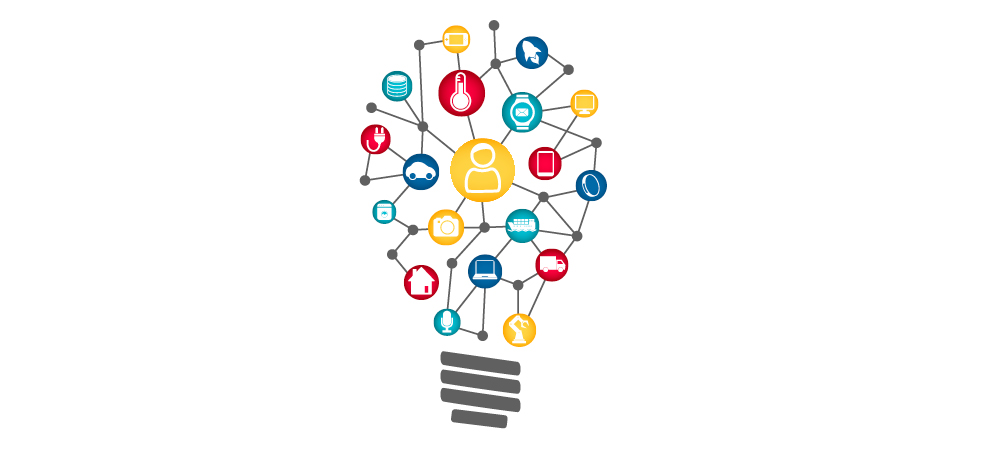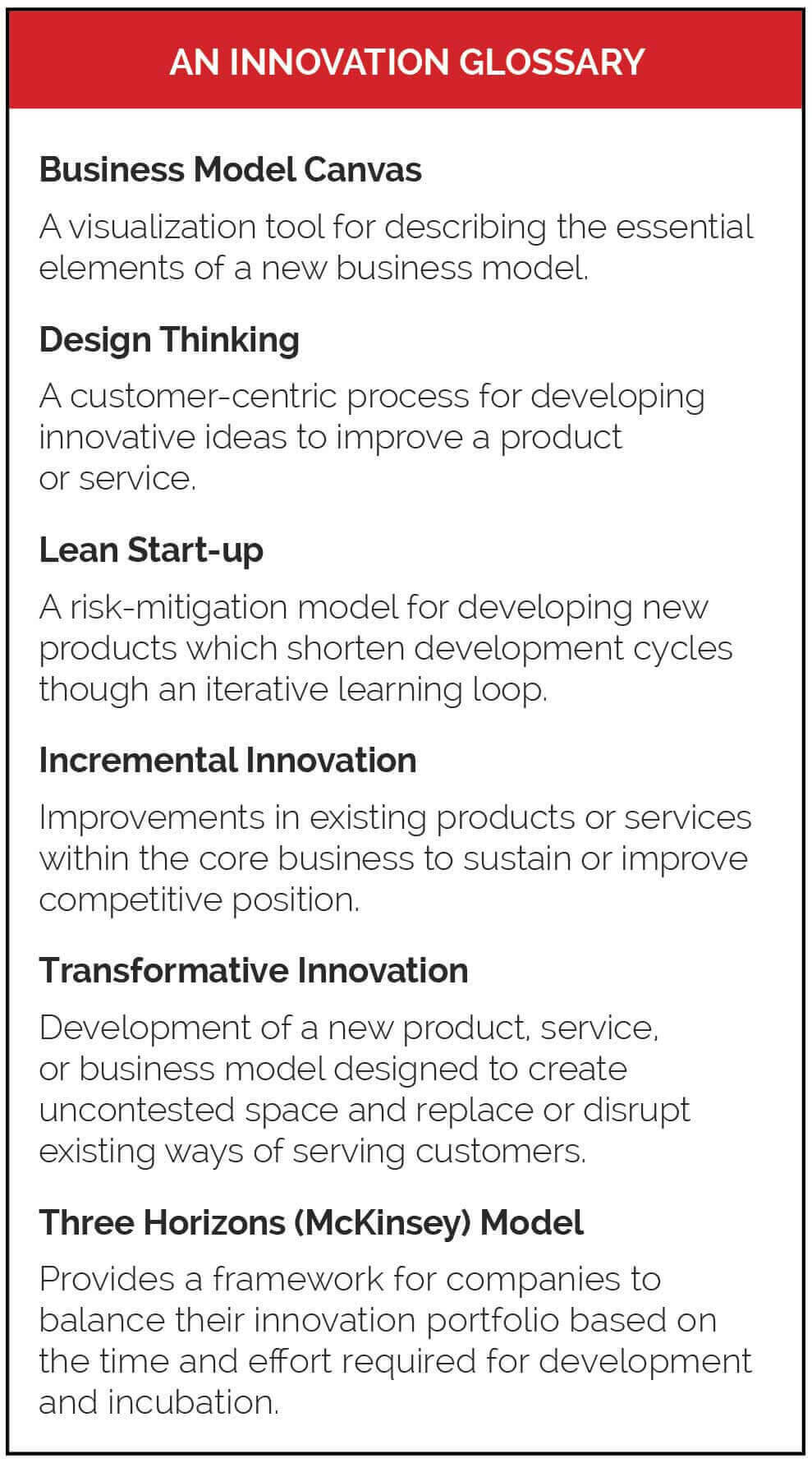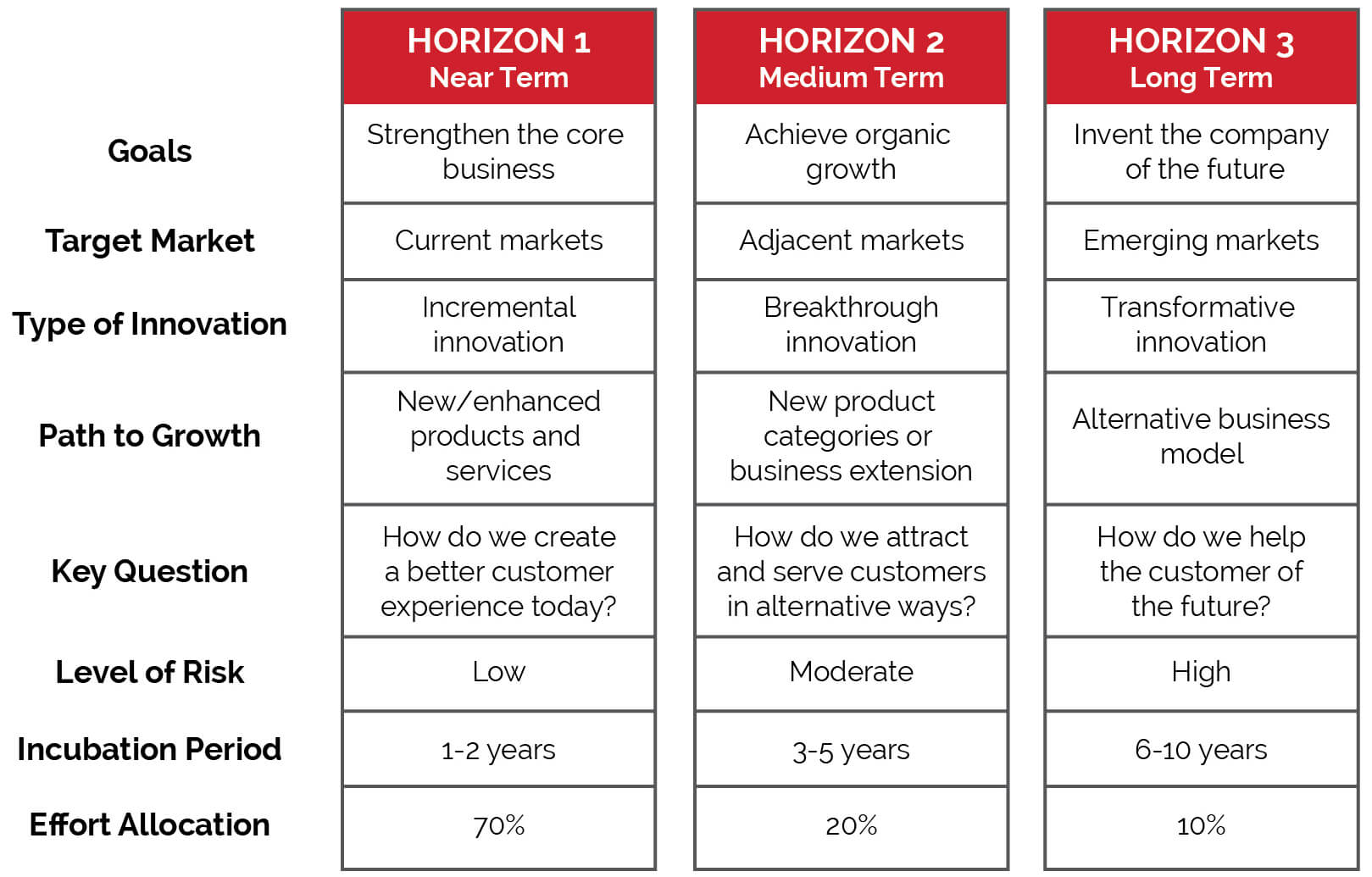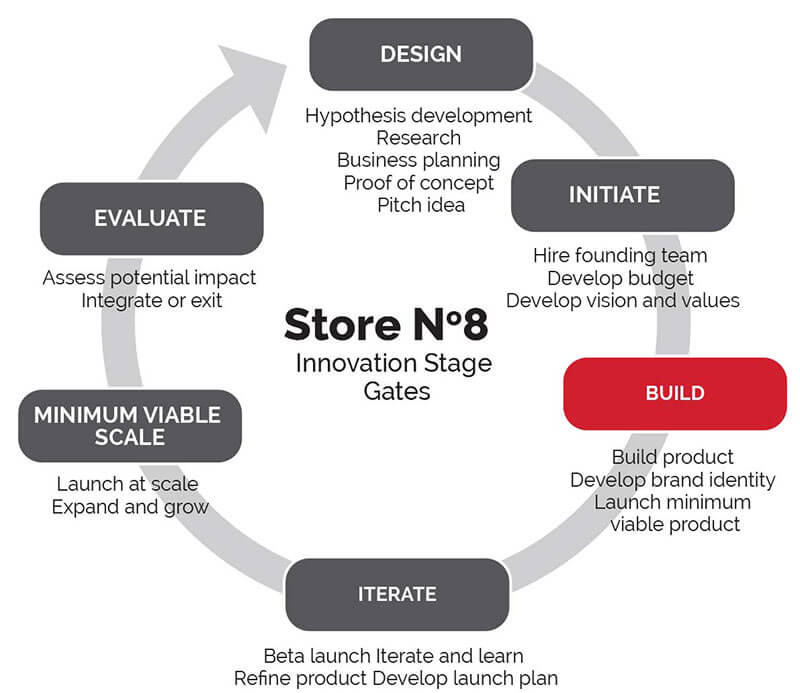What Comes Next?
In an age of massive disruption, every business is under pressure to innovate. Marketers are best positioned to lead the way – but how can they balance truly breakthrough thinking with the need to deliver results today?

The future has a nasty habit of creeping up on businesses when they least expect it. Even now, as the forces of digital change cause widespread upheaval, most companies view the potential risks as too remote to worry about. That is, until the future abruptly threatens their survival.
The music industry was the first high profile victim of digital disruption. Next came the video rental business. Then the film photography business. Not long after, the retail bookstore business. And since then a cavalcade of slow-to-react industries have watched digital interlopers snatch away their markets: printers, newspapers, magazines, map makers, the cab business, travel agencies, the list goes on. The business graveyard is filled with infamously complacent brands which ignored the storm warnings.
The reluctance of most companies to conceive of a future much different from today narrows their thinking to proven ways of making money – even in the face of disruption. How else can you explain Blackberry ignoring touchscreen technology? Or Blockbuster failing to anticipate the streaming revolution? Or Nokia undervaluing the importance of software? All textbook examples of temporal myopia – so fixated on the current reality that they failed to see what comes next.
Part of the explanation lies in human nature. We prefer to play it safe. We are creatures of habit. We shy away from the unknown. We cling to orthodoxy. We subscribe to incrementalism. We have confidence that we can fix whatever is wrong. And we have faith that it will all work out in the end.
All of those impulses are suicidal when you consider the velocity of change. Society is entering the early stages of a “Fourth Industrial Revolution” which will usher in an age of ubiquitous connectivity. Massive aggregation of data from connected devices combined with machine learning will transform the functioning of society. Products, services, networks and people will become tightly interconnected by AI-powered mobile ecosystems. This new hyper-connected world will have a profound impact on how people behave and how value is created. It will obliterate current business models. And it will affect every company, large or small, in profound ways: how they market themselves, create new products and take care of customers.
Every business needs to be thinking now about what that future could look like – 5 years from now, 10 years from now, 20 years from now. But most businesses are poorly equipped to think about the future, never mind plan for it. Futurism is often seen as a waste of time by short-sighted companies afraid to tamper with what they know works. As noted business strategist Gary Hamel says, “More often than not, companies miss the future not because it was unknowable, but because it was disconcerting”.
The Road to Ruin
A classic example of temporal myopia is General Electric, once admired for its ingenuity (“Imagination At Work”). How is it possible that one of the industrial titans of our times – once a fixture on the Dow Jones Industrial Average – whose lighting systems modernized everyday life – could lose nearly half its share value in the past year alone?
The origins of its decline lie in the ethos of the 1980s when most companies surrendered to the ideology of shareholder value. Virulent “short-termism” infected the upper ranks of publicly traded companies, especially GE which under the lean and mean regime of Jack Welch valued productivity and cost cutting over risk- taking. His infatuation with earning profits today at the expense of tomorrow put the company on the road to ruin. Perhaps his greatest misstep was turning GE Capital into a virtual bank, which at its peak accounted for close to half its revenues. The industrial heart of the business – power turbines, jet engines, MRI machines – became secondary to money lending – that is, until the financial crash of 2008 almost took down the company.
Welch’s successor as CEO, Jeff Immelt, was determined to return GE to its roots as an innovator. But the company’s innovation muscles had atrophied. Managers had been trained to salute, not to think differently. Their religion was Six Sigma. Failure to perform was punished. And management’s obsession with “making the numbers” encouraged risk aversion and conformity. To save costs, GE fatally cut back on basic research which is the lifeforce of any industrial products company. As the former CMO Beth Comstock explains in her tell-all book, “Imagine It Forward”: “GE had become a reliable performance machine, not a place for change-makers”.
Marketing had to turn a culture of obedience into a challenger culture.
Immelt chose to grow revenue organically rather than simply swallow up other companies as his predecessor had done. To do that, according to Comstock, he had to “make marketing into an innovation engine that inspired cultural transformation”. Marketing had to turn a culture of obedience into a challenger culture – one prepared to break the rules – in fact, invent new rules – just like a start-up would. A tough transition to make when most of the company was programmed to believe “if we build it they will come”.
Immelt started to play the long game, knowing that new ideas take time to incubate and grow to scale, often on the back of trial and error. He invested in the creation of a GE Digital Business which developed a promising industrial IoT platform. He launched an “Ecomagination” sustainability program to make GE products more energy efficient. And he pushed for every business unit to come up with novel ideas under a marketing-led program called “Imagination Breakthroughs”. But no matter how hard he tried, he could not overcome years of passivity. An unexpected collapse of the power generating market ultimately led to his crucifixion at the insistence of activist investors. GE’s belief in its own immortality had finally caught up with it. Today GE faces a shrivelled future under cowed leadership.
Lean Innovation
GE is certainly not the only famous brand whose imagination withered under the pressure of shareholder returns. Consider the plight of Kraft Heinz, owned by the numbers-obsessed 3G Capital. The company’s recent $15 billion write-down of its Kraft and Oscar Mayer brands was a clear indictment of 3G’s singleminded insistence on cost management above all else.

When Kraft Heinz greedily hiked retail prices over the objections of grocers, the shelf wars tilted in favour of heavily discounted store-branded products. The big food giant also seemed oblivious to the growing consumer preference for healthier eating. At a time when more and more people steer clear of the processed food aisle in favour of natural products, Kraft Heinz should have heard the alarm bells ringing. Instead the company slashed its advertising and research budgets, resulting in across-the-board market share losses. Brands that had been household names for generations, like Kraft Dinner, Maxwell House and Jello, were no longer reliable earners. As Jorge Paulo Lemann, co-founder of 3G Capital, recently confessed: “I’ve been living in this cozy world of old brands and big volumes. We bought brands that we thought could last forever. All of a sudden we are being disrupted.”
Fear of disruption is why the biggest consumer goods company in the world, Proctor & Gamble, has renewed its commitment to innovation, knowing the consumer market has radically changed. Challenger brands are stealing market share, doing an end-run around traditional distribution channels.
Under the former leadership of CEO A. G. Lafley the company had invested in a mix of “disruptive” and “incremental innovation”. Novel brands like Swiffer, Febreze and Pampers gave life to brand new product categories while Tide maintained its half-century grip on the household detergent market by simply getting better every year. In his book “The Game Changer” (2008), Lafley stated, “Innovation must be the central driving force for any business that wants to grow and succeed in both the short and long term”.
For a brief period following Lafley’s reign, P&G’s commitment to innovation wavered. As the former Global Marketing Officer Jim Stengel tells it, incubation funds dedicated to nurturing innovative ideas were partially reallocated to the business units. But recognizing the need to create more connected and “holistic” brand experiences, P&G recently adopted the practice of “lean innovation”, taking its cue from the growing universe of direct-to-consumer startups. It also launched a company-wide initiative called ‘Hands on Keyboard” to raise the digital fluency of the company. And P&G is not limiting its ambitions to inventive new products that deliver enhanced utility and personalization (like the Oral-B smart toothbrush); it is seeking to rethink the whole process of brand-building. The Chief Brand Officer Mark Pritchard has even said, “The days of advertising as we know it are numbered. We need to start thinking about a world with no ads.”
The company most admired for its design thinking is, of course, Apple. After all, the 2007 launch of the iPhone was the Big Bang event that launched a new era of mobile connectivity, changing how people conduct their lives. Today the iPhone accounts for 60% of Apple’s revenue. But now the smartphone category has matured. Apple’s competitive lead has shrunk. And for the first time in many years Apple is facing a flattening revenue curve. So it no longer reports the number of iPhones it sells. Like P&G, Apple knows it has reached a turning point. It must adapt to a fast-evolving world of connected services. Apple’s goal now is to shift from just making cool gadgets to growing its service-related revenues, apparently by transforming itself into a media services company delivering content-rich experiences, signalling perhaps the future of all product manufacturing.
10X Thinking
Reimagining the customer experience through the lens of new and emerging technologies is becoming the surest path to growth. It is how start-ups gain fast traction. But for established companies, how much time and energy should be given to innovative thinking? And whose job is that, exactly?
According to Beth Comstock, marketing is best positioned to “look through the eyes of the user to find gaps in the market, to look at what’s happening and imagine what could”. After all, a big part of marketing’s job is to find out why customers behave the way they do. Marketers are used to probing for the problems that customers are trying to solve; for identifying gaps in how they are being served; for exposing breakages in the customer journey. Serving as customer advocates, marketers can make the case for truly bold thinking (what Google calls “10x thinking”) that transform the customer experience.
And as the brand storyteller, marketing can convert that aspirational thinking into a compelling narrative which ladders up to the business vision and purpose.
Serving as customer advocates, marketers can make the case for truly bold thinking.
While marketing should take point on “big picture” visioning, new ideas are born out of free thinking involving as many different perspectives and disciplines as possible. Innovation is a team sport. It takes a collective commitment. Collaboration and alignment are crucial. Otherwise even the most promising ideas will never be given permission to grow. People move back to their day jobs, figuring the cool ideas they dreamed up with will take flight on their own. But conflicting priorities and resource contention will inevitably kill people’s enthusiasm. The burning issues of the day will always take precedence, even when failing to act opens the door to disruption.
For innovation to become an entrenched part of the business culture, a repeatable process is required to keep new ideas flowing from ideation to commercialization. The funding formula should assume more misses than wins, like a prospector panning for gold. And market successes need to be celebrated to sustain enthusiasm. That process should be structured around two objectives: achieving incremental innovation that leads to an immediate competitive advantage – and transformative innovation that rewrites the rules of the game.

Bold, Bolder, Boldest
An innovation program should not be confused with digital transformation. While they may overlap, digital transformation is usually tighter in scope, intended to modernize the IT infrastructure, fix the customer experience, improve operational agility and efficiency, integrate new channels and in general allow a company to compete in an always-on world. An innovation program, by contrast, is a breeding ground for novel ways to create value for customers – either by inventing new products, overlaying a service dimension or developing entirely new business models (e.g., car sharing versus car ownership). The main goal of innovation is not to disrupt – it is to create a bond with customers resistant to disruption. If that happens to result in a disruptive idea which creates uncontested space, all the better.
The main goal of innovation is not to disrupt – it is to create a bond with customers resistant to disruption.
A structured way for companies to think about innovation is the “Horizon Model” first introduced in the book “The Alchemy of Growth” (2000). According to this model, sustainable business growth depends on the right mix of near and long-term innovation. The first priority is incremental innovation within the core business, followed by more speculative and variable bets on the medium and distant future. That way, the company can improve upon its current market position while ensuring the company remains relevant and viable for years to come.
When that seminal book first came out, a long-term innovation was defined as taking a decade or more to incubate and mature, contingent on an imagined scenario playing out as hoped. It has come to be known as a “moonshot” (think SpaceX or GoogleX). Yet “change the world” thinking is no longer bound by time: technology is moving too fast. So companies must pursue different innovation streams – bold, bolder, boldest – with the expectation that any idea, no matter how farfetched, could be launched into orbit at any time.
Since the primary goal of innovation is to create new customer value, most tools and methodologies begin by looking at problems the customer needs to solve, now and in future. The Harvard professor Thales Teixeira, in his new book “Unlocking the Customer Value Chain”, suggests looking for “weak links” in how customers interact with brands through the relationship lifecycle, identifying gaps between what they experience and what they want. “The way to do that”, he explains, “is to first understand a group of customers with similar needs – a target segment – and map out all the activities in that group’s typical customer value chain”.

To guide the balance of short-term and long-term innovation, it is helpful to calibrate the investment according to different time horizons, business goals and levels of risk, as originally proposed by McKinsey.
A complimentary approach is to consider market trends such as evolving social values and practices, new media habits, and cultural shifts that might inspire a business opportunity, lead to a brand repositioning or demand a strategic pivot. Examples include the rise of mindful consumerism; the declining trust in big brands; and the growing comfort with mobile payments. An adoption curve will identify when these trends are likely to set off sweeping social change. Obvious tipping points might include the mass switchover to 5G phones – the universality of smart devices in homes – or the widespread practice of ad blocking. When a tipping point has been reached, it invariably triggers a wave of unintended consequences: It is the“X” factor – the “unknown unknowns” – that cause the companies the most grief.
It is the“X” factor – the “unknown unknowns” – that cause the companies the most grief.
A critical stage of innovation is scenario design – imagining what an alternative future might look like 5-10 years from now. That decade-long time horizon is a short enough to make some educated guesses without crossing over into the realm of science fiction. For example, one certain eventuality is that people will manage their entire lives through their voice-controlled mobile devices (just as the Chinese shopper practically does today). Those devices will likely serve as a gateway to an ecosystem of interconnected platforms, each of which will play a functional role in the life of a customer (think health and wellness, food delivery, home services, transportation, etc). People will opt into a wide range of on-demand subscription services that support their everyday needs, aided by virtual agents intimate with their preferences and habits. All information will be personalized and presented in the context of the moment, operating as a utility driven by self-learning algorithms.
Working with that one plausible hypothesis, the innovation team can start to reimagine the customer experience. How will people discover and invite new brands into their lives? What new products or services might be possible through deeper connections with customers? What third-party partnerships will be necessary to plug capability gaps? Which emerging technologies will enable a differentiated experience?
The answers might form the basis of a “next generation” business model. A winning idea starts to take shape: “So what if we …”.

Walmart’s Incubation Lab Store 8 follows a prescribed series of innovation stage gates leading up to the launch stage.
Game of Chance
What happens when the idea deemed most likely to succeed actually makes it through the pitch stage and receives initial start-up capital? That’s when ideas enter what venture capitalists call the “Death Valley Curve” – the period between initial funding and revenue generation. For those ideas to break free from the nest,there must be an end-to-end innovation process that protects them from being snuffed out before they can fend for themselves.
Innovation will always be a game of chance.
A lot depends on the desired payback period, of course, and the magnitude of the investment. But generally, a promising idea goes through some form of prototyping and “minimum viable product” testing before it is “green lighted”. An Innovation Lab may be set up to steward those ideas, just like Walmart has done with “Store No.8” whose mandate is to develop “strategic assets that will impact the enterprise on a 5 to 10+ year time horizon”. Alternatively, innovation specialists can be embedded in each line of business to champion the design thinking process.
The more bets on the table, the greater the odds of success. But no matter how many checkpoints are put in place, no longer how long the incubation period, no matter how big the wager, innovation will always be a game of chance.
Which is why most companies prefer to focus on recognizable near-term challenges rather than making the effort of conjuring a theoretical world that may never come to pass. But with the future approaching faster than anyone can imagine, companies can no longer afford the risk of being taken by surprise.
Stephen Shaw is the chief strategy officer of Kenna, a marketing solutions provider specializing in customer experience management. He is also the host of a regular podcast called Customer First Thinking. Stephen can be reached via e-mail at sshaw@kenna.ca